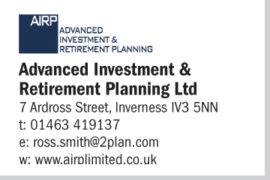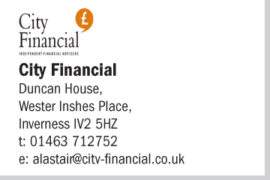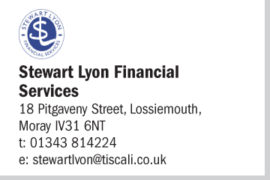INDEPENDENT FINANCIAL ADVICE ON MONEY MATTERS AROUND THE HIGHLANDS, ISLANDS & MORAY
After more than a year of COVID-19 restrictions, many people have more disposable income than they’re used to. But with the Bank of England’s base rate of interest at a record low of 0.1% offering paltry incentives for saving in cash, increasing numbers of savers are turning towards investing in ISAs in search of better returns.
How do ISAs work?
Each tax year, over-18s get an ISA allowance which sets the maximum you can save within the tax-free wrapper. In 2021/22, the maximum you can put into an ISA is £20,000.
You can invest the whole lot into one type of ISA or split the allowance between different ISAs. If you choose to split it, however, you will not be able to invest more than £20,000 in total across the various options.
You must save or invest on or before the end of the tax year on 5 April for it to count towards that year’s allowance. Crucially, any unused allowance does not roll over – so you either use it or lose it.
The new allowance kicks in on 6 April each year when the tax year starts. Any investments held within the tax-free ISA wrapper can fluctuate, as the value of your investments can go up or down depending on how your shares, funds or bonds perform.
For those investing on behalf of under-18s, the same risk principle applies to Junior ISAs that are invested in stocks and shares. Instead of the £20,000 annual ISA allowance, you can place up to £9,000 into a tax-free wrapper for your child or grandchild in 2021/22.
Maximising your allowance
Typically, higher earners are more likely to be in a position to make full use of the £20,000 ISA allowance in 2021/22, although arguably more people can take advantage of maximising the £9,000 Junior ISA allowance.
You don’t have to maximise your allowance in a single £20,000 or £9,000 lump sum, though. Some ISA providers allow monthly subscriptions, making ISA investing as easy as conventional savings products.
Types of investment
When you open a stocks-and-shares ISA, you can either leave the money sitting as cash but earning no interest or invest any percentage of that cash in funds, bonds, or shares.
Funds are a selection of shares or bonds from various companies pooled into one investment by a fund manager. If, for example, you campaign for climate change, investing in a fund that contains oil companies might not be for you.
When you invest in a bond, it’s basically a loan to a government or company. Bonds can play an important role in any investment portfolio as they yield income, are less risky than stocks, and can help diversify your portfolio.
When you invest in shares or equities, you are investing in a specific company. If you own a share in a company, you own a fraction of that company and a slice of its value. Should that company grow and become more valuable, your investment will grow with it.
Monitoring funds
Your ISA provider should send annual statements, either electronically or through the post, to show you how your investments have performed during the previous tax year.
You need to ensure your provider is making your money work as hard as possible and checking your ISA investments’ performance regularly is a good start. Your Independent Financial adviser can help you with this.
Transferring funds
While investing should always be for the longterm, sticking with a fund that was once a top performer might not be a wise strategy in times of market volatility.
It’s possible to move your money from one ISA to another and retain its tax-free status. That applies whether you’re transferring to a better performing provider or to a different type of ISA, for example.
The current trend clearly indicates that more people are moving out of cash ISAs into stocks-and-shares ISAs, enticed by the prospect of exciting returns as the economy hopefully bounces back from the worst of the pandemic.
This ability to transfer ISA funds enables you to shop around for potentially better returns and, if you already have several ISAs, you can put all of your money in one place. Transfers of funds you put in an ISA in previous tax years don’t affect your annual ISA allowance.
Talk to your Independent Financial Adviser to review your current ISA arrangements and to help you make the choices that are most appropriate for you.
Important information
The way in which tax charges (or tax relief, as appropriate) apply depends on individual
circumstances and may be subject to future change. ISA eligibility depends on individual circumstances.
Investing places your capital at risk, and you might not get back the amount you invest.
This document is solely for information purposes and nothing in it intends to constitute advice or a recommendation. You should not make any investment decisions based on this content.
While considerable care has been taken to ensure the information in this document is accurate and up-to-date, no warranty is given as to the accuracy or completeness of any information.
Next month’s topic is on Investment Tax Wrappers
Contact your local Independent Financial Advisers for a no obligation initial discussion – Click to visit their website:






